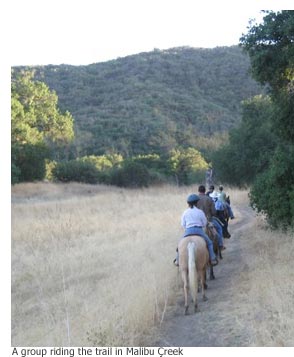State parks to remain fully open, thanks to friendly feds
November 23, 2009
The National Parks Service has come to the rescue of the highly popular state parks in the Santa Monica Mountains, providing a grant of $939,169 to avoid cutbacks that would have been likely because of Sacramento’s budget shortfall.
The state has seven parks in the Santa Monica Mountains area—including Leo Carrillo, Topanga, Will Rogers, Point Dume and Malibu Lagoon—with campgrounds at Leo Carrillo, Malibu Creek, Point Mugu and Thornhill Broom. About 3 to 4 million people visit each year.
“As a result of this grant, the public should experience no reduction in services or operating hours when they visit the many beautiful state parks and beaches within the national recreation area,” Woody Smeck, superintendent of the Santa Monica Mountains National Recreation Area, said in an e-mail to State Senator Fran Pavley and Assembly Member Julia Brownley.
“We’re just pleased that we can bridge the gap,” Smeck said later in an interview. “This grant is really an investment in maintaining a good national-state park system here in Southern California.”
The grant, made to the Angeles District of California State Parks, was issued Friday.
Without the infusion of funds, state parks officials would have had to reduce services, said Ron Schafer, district superintendent of the Angeles District, California State Parks. “It could have been significant,” he said pointing to a laundry list of “usual suspects”—ranging from bathroom closures at campgrounds to reduced hours and seasonal closings.
Supervisor Zev Yaroslavsky, whose district includes the Santa Monica Mountains, said he was thrilled by the level of intergovernmental cooperation that clearly is accruing to the public’s benefit.
“Protecting and operating these precious parklands is a cooperative venture, and no level of government can do it alone,” the supervisor said. “In light of the dire fiscal situation in Sacramento, I’m very grateful that Washington was able and willing to step in and assist us this year for the benefit of the public.”
Assembly member Brownley agreed.
“The NPS stepping up in this very significant way is just one more example of the extraordinary working partnerships we have among the various park agencies. I don’t ever want to see a single one of our precious state parks or beaches closed to the public. We are the stewards of these unique resources and have an obligation to protect and preserve them, not to shutter them. I can’t say enough to express my gratitude to the NPS for this wonderful gift.”
The national parks service is not only acting to benefit users of the state parks—there’s also an element of self-interest, Smeck said.
Because the state and national parks are “interlocking,” any notion of closing the state parks for, say, one day a week or for an entire month at a stretch, would have presented difficulties for his staff, Smeck said. Boundaries are porous, and fire safety would have been an issue in an unattended park. In addition, the burden of any search and rescues would have fallen upon the national parks service.
“As the nearest emergency responder and provider of park programs,” Smeck said in his e-mail, “the National Park Service would have directly felt the consequence of state park service reductions.












 405 bridge work causes a stink
405 bridge work causes a stink
